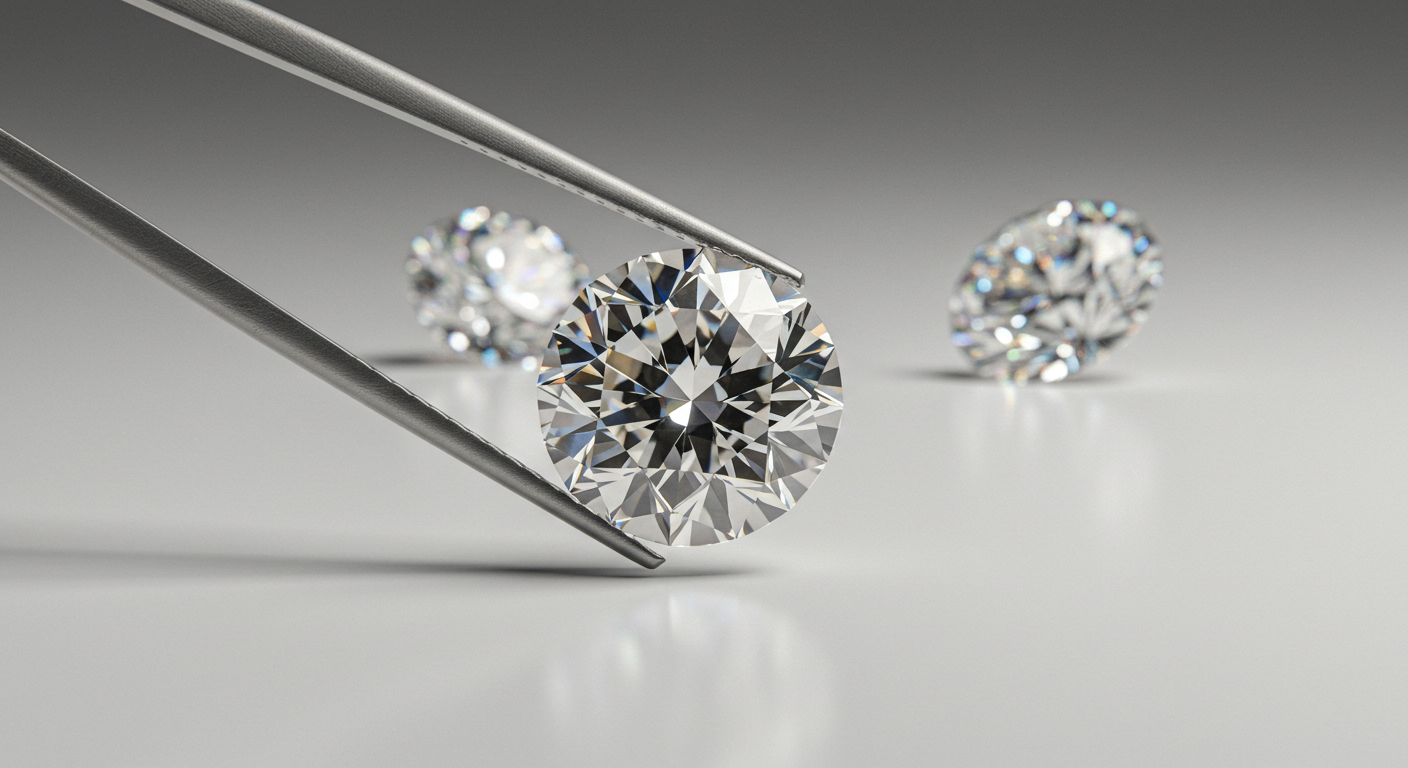1. Cut:The Sparkle Factor
The cut of a diamond refers to how well it has been shaped and faceted to reflect light. A well-cut diamond sparkles brilliantly, as its facets act like tiny mirrors that capture and reflect light.
Cutting Styles
The most popular cutting style is the brilliant cut. “Brilliant” refers to the style of faceting and diamonds of different shapes can be called brilliant cut gemstones. Brilliant cut gemstones usually have similar facets in triangular and kite shapes that radiate out from the centre of the gemstone.
Less common styles would be “Step” cut and “Mixed” cut. In step cut gems, the facets can be described as more step-lie around the gemstone. Mixed cut gems refer to gems in which a mixture of brilliant and step cuts is found.
Shape
The round brilliant cut gemstone is by far the most common, as to make fancy shapes like marquise, emerald, pear, heart, oval, hearts and even triangles would mean more wastage of the precious diamond rough. However, fancy shapes have gained popularity over time for its uniqueness, helping to achieve either vintage aesthetics or modern takes on classic styles. Round cut diamonds present a classic and traditional look while fancy cut diamonds display a distinctive character.
What to look for:
- Consider your style and choose the shape that appeals most to your taste.
- GIA’s diamond cut grading system evaluates the cut quality of a standard round brilliant diamond using Excellent, Very Good, Good, Fair and Poor. Excellent or Very Good cuts will maximise brilliance and fire.
2. Color: The Purity of Hue
Diamonds come in many colors. Diamonds that range from colorless to light yellow and brown fall within the normal color range. Within that range, colorless diamonds are the most rare, so they’re the most valuable. They set the standard for grading and pricing other diamonds in the normal color range.
GIA’s color-grading scale for diamonds is the industry standard. The scale begins with the letter D, representing colorless, and continues with increasing presence of color to the letter Z, or light yellow or brown. Each letter grade has a clearly defined range of color appearance. Diamonds are color-graded by comparing them to stones of known color under controlled lighting and precise viewing conditions.
What to Look For:
- Colorless Stones: Grades D, E, and F are ideal if you’re seeking a pristine, icy look.
- Near-Colorless: Grades G, H, I, and J offer excellent value while still appearing white especially in yellow gold settings.
3. Clarity: The Art of Flawlessness
Clarity refers to the presence of internal inclusions or external blemishes. Under the GIA Clarity Scale, diamonds are graded from Flawless to Included using 10x magnification.

- Flawless (FL) – No inclusions or blemishes are visible to a skilled grader using 10× magnification
- Internally Flawless (IF) – No inclusions and only blemishes are visible to a skilled grader using 10× magnification
- Very, Very Slightly Included (VVS1 and VVS2) – Inclusions are difficult for a skilled grader to see under 10× magnification
- Very Slightly Included (VS1 and VS2) – Inclusions are minor and range from difficult to somewhat easy for a skilled grader to see under 10x magnification
- Slightly Included (SI1 and SI2) – Inclusions are noticeable to a skilled grader under 10x magnification
- Included (I1, I2, and I3) – Inclusions are obvious under 10× magnification and may affect transparency and brilliance
What to Look For:
- Eye-Clean Diamonds: Aim for diamonds in the VS1-VS2 (Very Slightly Included) or SI1-SI2 (Slightly Included) range, which often appear flawless to the naked eye and are more affordable.
- Flawless and internally flawless diamonds, and even VVS1 – VVS2 diamonds are suitable as investment pieces.
4. Carat: The Weight of Beauty
Carat weight measures the size of a diamond. While larger diamonds are rarer and often more valuable, carat isn’t the only factor that determines a diamond’s beauty.
What to Look For:
- Balance Size and Quality: A slightly smaller carat weight with a better cut, color, and clarity can look more stunning than a larger diamond with lower grades.
- Consider a suitable size for your taste and style.
Additional Tips for Buying Diamond Engagement Rings
- Certification: Always choose diamonds certified by reputable organizations like GIA (Gemmological Institute of America) or AGS (American Gem Society). Certification ensures authenticity and quality.
- Budget: Decide on a budget before you shop. Knowing which of the 4 Cs you prioritize most will help you find the best value.
- Jewellery Setting: The right setting can enhance a diamond’s beauty and protect it from damage.
Understanding the 4 Cs empowers you to select a diamond that perfectly matches your preferences and budget. Whether you value brilliance, size, or a flawless appearance, these characteristics will guide you towards a meaningful purchase that lasts a lifetime. At Anphie Jewels, we’re committed to helping couples make an informed and confident choice for their engagement rings. Explore our 3D designer tool and make an appointment with us!
Specific content in this blog have been extracted from GIA.edu/.


